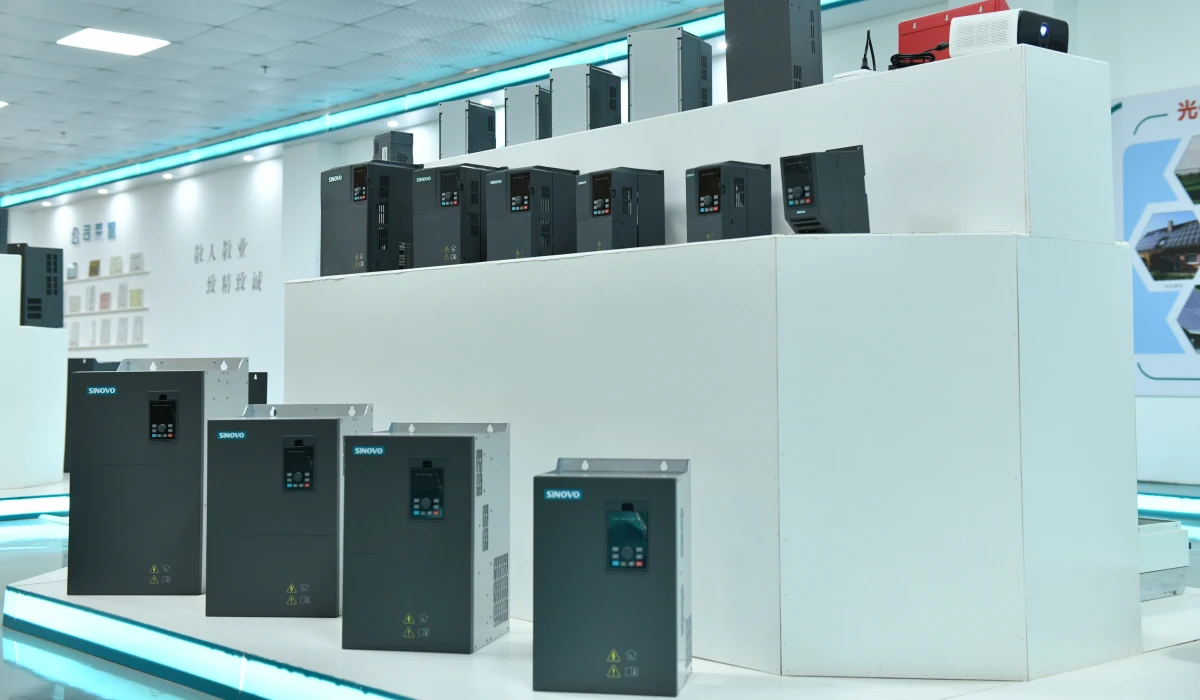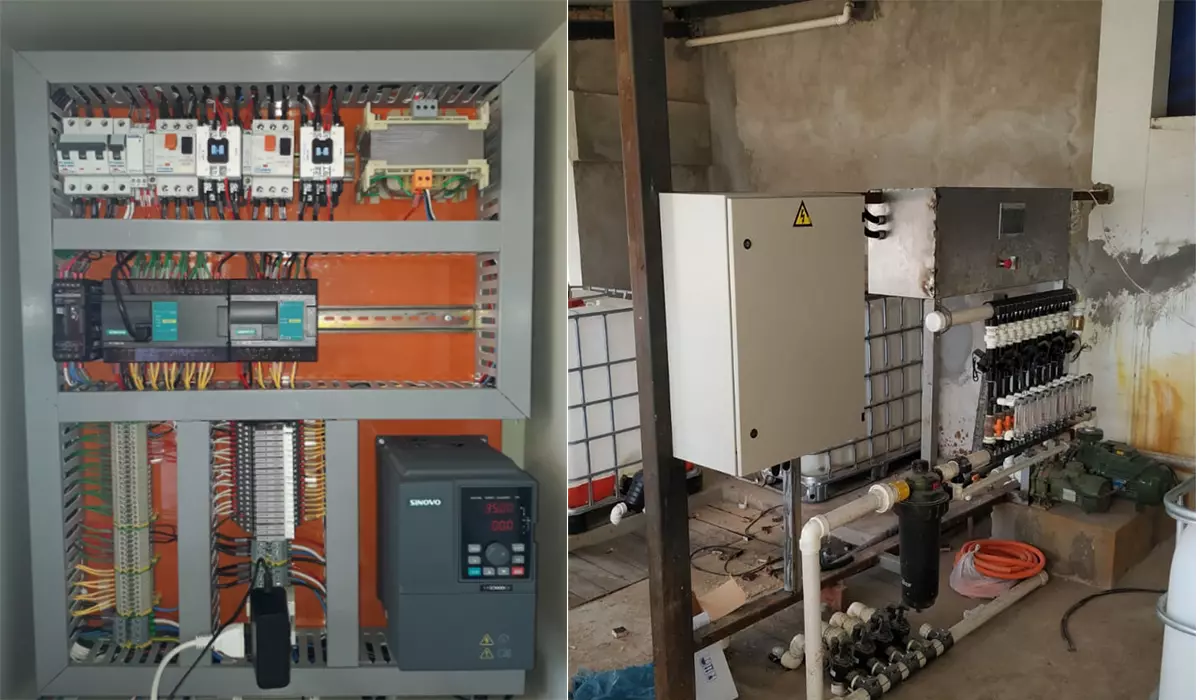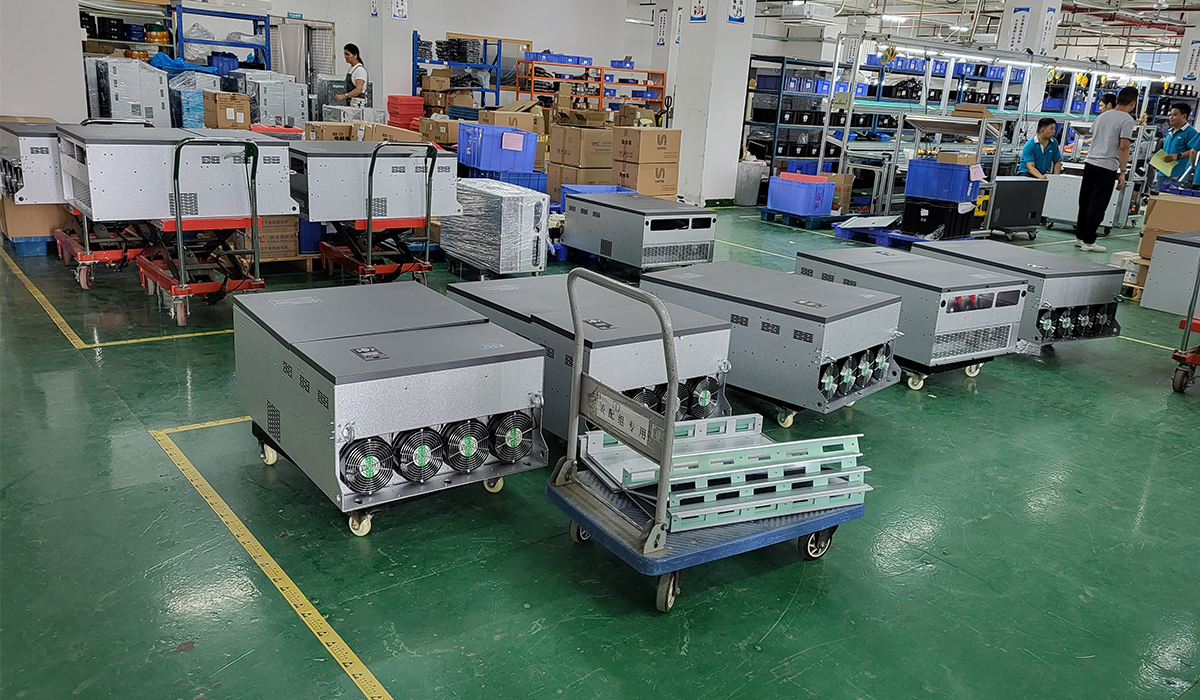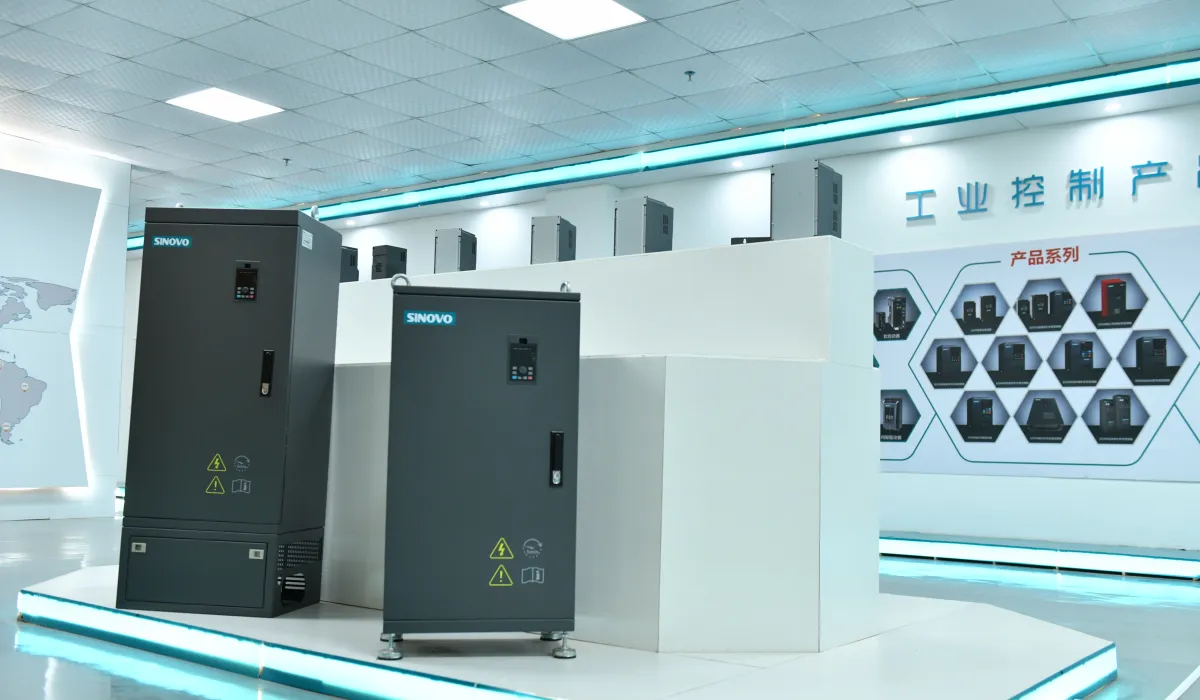Variable Frequency Drives (VFDs) are critical in converting single-phase power to three-phase power, enabling the use of three-phase motors in applications where only single-phase power is available. The control methods used in these VFDs can significantly impact their performance, efficiency, and suitability for different applications.
Understanding Variable Frequency Drives
A Variable Frequency Drive (VFD) is an electronic device that adjusts the frequency and voltage supplied to an electric motor, allowing precise control of motor speed and torque. When converting single-phase power to three-phase power, VFDs employ different control methods to manage the conversion and ensure optimal motor performance.
Types of Single-Phase to Three-Phase VFDs Based on Control Methods
1.Volts-per-Hertz (V/Hz) Control
Volts-per-Hertz (V/Hz) Control is one of the simplest and most commonly used control methods in VFDs. This method maintains a constant ratio between the voltage and frequency supplied to the motor, ensuring stable motor operation.
Advantages:
Simple implementation and cost-effective.
Suitable for general-purpose applications where precise control is not critical.
Reliable for applications with a stable load.
Disadvantages:
Limited precision in speed and torque control.
Less efficient for variable load applications.
Not ideal for applications requiring high dynamic performance.
Applications: Pumps, fans, conveyors, and other applications where the load remains relatively constant.
2.Sensorless Vector Control
Sensorless Vector Control improves upon the V/Hz control method by providing better speed and torque control without the need for a physical sensor. This method estimates the motor’s speed and position using mathematical models and feedback from the motor’s electrical characteristics.
Advantages:
Improved torque and speed control compared to V/Hz control.
Suitable for applications requiring moderate precision and dynamic performance.
Eliminates the need for a physical sensor, reducing cost and complexity.
Disadvantages:
More complex and expensive than V/Hz control.
May struggle with very low-speed operations or highly dynamic applications.
Requires more tuning and setup effort.
Applications: Mixers, extruders, machine tools, and other applications requiring moderate precision in speed and torque control.

3.Closed-Loop Vector Control
Closed-Loop Vector Control, also known as Field-Oriented Control (FOC), offers the highest level of precision and dynamic performance among VFD control methods. This method uses feedback from an encoder or resolver to precisely control the motor’s speed and position.
Advantages:
Superior precision in speed and torque control.
Excellent dynamic performance, suitable for highly demanding applications.
Ideal for applications requiring high starting torque and precise positioning.
Disadvantages:
Higher cost and complexity due to the need for sensors and advanced control algorithms.
Requires more maintenance and calibration.
Increased setup and tuning effort compared to sensorless methods.
Applications: CNC machines, robotics, elevators, and other applications requiring high precision and dynamic response.
4.Direct Torque Control (DTC)
Direct Torque Control (DTC) is an advanced control method that provides high performance by directly controlling motor torque and flux. This method does not rely on a fixed switching frequency, allowing for rapid response to changes in load conditions.
Advantages:
Excellent torque and speed response.
High efficiency and performance across a wide range of operating conditions.
Reduced mechanical stress on the motor due to smooth control.
Disadvantages:
High complexity and cost.
Requires advanced algorithms and significant computational power.
May require specialized hardware for optimal performance.
Applications: High-performance drives in automotive, aerospace, and industrial automation where rapid and precise torque control is critical.
The choice of control method for a single-phase to three-phase VFD significantly impacts its performance, efficiency, and suitability for different applications.
Volts-per-Hertz (V/Hz) Control is ideal for simple, cost-effective applications with stable loads.
Sensorless Vector Control offers improved precision without the need for sensors, making it suitable for moderate precision applications.
Closed-Loop Vector Control provides the highest level of precision and dynamic performance, perfect for demanding applications requiring precise positioning and high starting torque.
Direct Torque Control (DTC) delivers rapid torque and speed response, suited for high-performance applications.
Understanding these differences can help in selecting the right VFD for specific industrial needs, ensuring optimal motor performance and energy efficiency.
PDF: Types of Single-Phase to Three-Phase Variable Frequency Drives Based on Control Methods
Variable Frequency Drives (VFDs) are critical in converting single-phase power to three-phase power, enabling the use of three-phase motors in applications where only single-phase power is available. The control methods used in these VFDs can significantly impact their performance, efficiency, and suitability for different applications.
Understanding Variable Frequency Drives
A Variable Frequency Drive (VFD) is an electronic device that adjusts the frequency and voltage supplied to an electric motor, allowing precise control of motor speed and torque. When converting single-phase power to three-phase power, VFDs employ different control methods to manage the conversion and ensure optimal motor performance.
Types of Single-Phase to Three-Phase VFDs Based on Control Methods
1.Volts-per-Hertz (V/Hz) Control
Volts-per-Hertz (V/Hz) Control is one of the simplest and most commonly used control methods in VFDs. This method maintains a constant ratio between the voltage and frequency supplied to the motor, ensuring stable motor operation.
Advantages:
Simple implementation and cost-effective.
Suitable for general-purpose applications where precise control is not critical.
Reliable for applications with a stable load.
Disadvantages:
Limited precision in speed and torque control.
Less efficient for variable load applications.
Not ideal for applications requiring high dynamic performance.
Applications: Pumps, fans, conveyors, and other applications where the load remains relatively constant.
2.Sensorless Vector Control
Sensorless Vector Control improves upon the V/Hz control method by providing better speed and torque control without the need for a physical sensor. This method estimates the motor’s speed and position using mathematical models and feedback from the motor’s electrical characteristics.
Advantages:
Improved torque and speed control compared to V/Hz control.
Suitable for applications requiring moderate precision and dynamic performance.
Eliminates the need for a physical sensor, reducing cost and complexity.
Disadvantages:
More complex and expensive than V/Hz control.
May struggle with very low-speed operations or highly dynamic applications.
Requires more tuning and setup effort.
Applications: Mixers, extruders, machine tools, and other applications requiring moderate precision in speed and torque control.

3.Closed-Loop Vector Control
Closed-Loop Vector Control, also known as Field-Oriented Control (FOC), offers the highest level of precision and dynamic performance among VFD control methods. This method uses feedback from an encoder or resolver to precisely control the motor’s speed and position.
Advantages:
Superior precision in speed and torque control.
Excellent dynamic performance, suitable for highly demanding applications.
Ideal for applications requiring high starting torque and precise positioning.
Disadvantages:
Higher cost and complexity due to the need for sensors and advanced control algorithms.
Requires more maintenance and calibration.
Increased setup and tuning effort compared to sensorless methods.
Applications: CNC machines, robotics, elevators, and other applications requiring high precision and dynamic response.
4.Direct Torque Control (DTC)
Direct Torque Control (DTC) is an advanced control method that provides high performance by directly controlling motor torque and flux. This method does not rely on a fixed switching frequency, allowing for rapid response to changes in load conditions.
Advantages:
Excellent torque and speed response.
High efficiency and performance across a wide range of operating conditions.
Reduced mechanical stress on the motor due to smooth control.
Disadvantages:
High complexity and cost.
Requires advanced algorithms and significant computational power.
May require specialized hardware for optimal performance.
Applications: High-performance drives in automotive, aerospace, and industrial automation where rapid and precise torque control is critical.
The choice of control method for a single-phase to three-phase VFD significantly impacts its performance, efficiency, and suitability for different applications.
Volts-per-Hertz (V/Hz) Control is ideal for simple, cost-effective applications with stable loads.
Sensorless Vector Control offers improved precision without the need for sensors, making it suitable for moderate precision applications.
Closed-Loop Vector Control provides the highest level of precision and dynamic performance, perfect for demanding applications requiring precise positioning and high starting torque.
Direct Torque Control (DTC) delivers rapid torque and speed response, suited for high-performance applications.
Understanding these differences can help in selecting the right VFD for specific industrial needs, ensuring optimal motor performance and energy efficiency.
PDF: Types of Single-Phase to Three-Phase Variable Frequency Drives Based on Control Methods
continue reading
Related Posts
Variable Frequency Drives (VFDs) are essential in modern industrial automation and motor control systems. They provide precise control over motor […]
Testing the insulation resistance of a Variable Frequency Drive (VFD) is a crucial maintenance task to ensure its reliability and […]
Variable Frequency Drives (VFDs) and energy savers are both technologies aimed at improving energy efficiency in various applications. However, they […]



